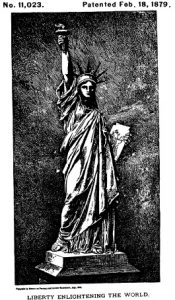Design Patent Enforcement?
Design Patents are different from Utility Patents. Classic examples of design patents are tableware, tire treads, shoe treads, jewelry, furniture, and product packaging. Some famous design patents include the original curvy Coca-Cola bottle and the Statue of Liberty.
What is a Design Patent?
Design patents protect the ornamental features of a useful invention. Around the world, Design Patents are known as industrial design patents. When compared to a Utility Patent, Design Patents have limited protection. They do not protect the technical or functionality features of the invention or the use of the invention, they protect the way it looks. The duration of a Design Patent is limited to 15 years where a Utility Patent generally lasts 20 years.
How can Design Patents be enforced?
Enforcement of a design patent is also limited. Generally, inventors of a Design Patent can stop others from making, using or selling a product which looks like the patented product. It doesn’t matter if it does the identical thing, the identical way and achieves the same result. It must look like the patented product. In some cases, a small differences between the patented invention and an infringing product can be enough to get around the patent.
Section 337 Investigations

The Statute of Liberty was once protected as a Design Patent. Enforcement of Design Patents can be difficult
The owners of a Design Patent have the right to stop others from making, using, selling or importing into the US any products which incorporates the patented design. To enforce your rights, typically you would have to go to Court and seek an injunction or go to the International Trade Commission and seek a Section 337 investigation and if successful obtain an exclusion order limiting the shipment and sell into the US of an infringing product. Although these ITC “section 337 investigations” can be effective, they can require extensive work and are often expensive for patent owners.
For example, some of these ITC cases can take between 15-18 months to resolve and the average cost to bring an ITC complaint through post appeal procedures can vary between $1.5 Million and $4 Million. This is still less expensive than a comparable patent infringement case, which can range between $2 Million and $6 Million and take several years (or more) to conclude.
What can inventors do to stop Design Patent infringement?
Earlier this month, the Senate introduced a bill—the Counterfeit Goods Seizure Act of 2019—to allow for an expedited enforcement process to stop the infringement of products protected with a Design Patent. If it becomes law, the US Customs and Border Department (CBP) will be allowed to seize counterfeit goods that infringe intellectual property rights, specifically design patents, at the border. If this bill passes, Design Patent holders can finally have a meaningful option to stop the counterfeits (which are estimated at over $1 Trillion) from coming into the US.
Currently, trademark holders and copyright holders can use the CBP to stop counterfeiting products covered by trademarks and copyrights. But Design Patents holders are not able to use the stream-lined CBP procedure to enforce their rights. The proposed legislation will allow design patents to be added to the list of intellectual property that CBP can enforce. This will allow Design Patent Holders to enforce their patent rights at the border to limit the flow of counterfeit goods into the US.
If you would like to discuss enforcement of your Design Patent please contact one of our patent attorneys.
